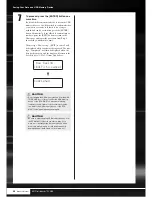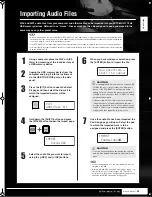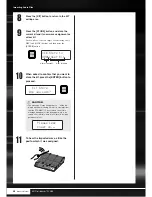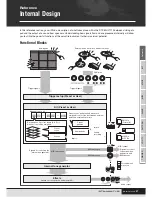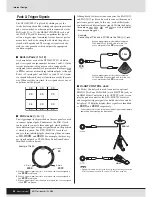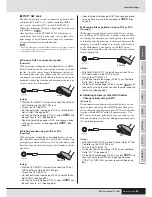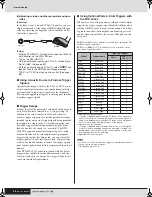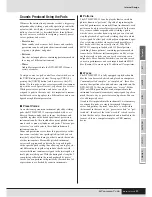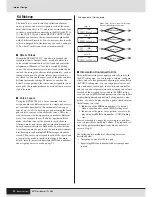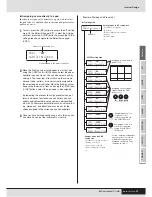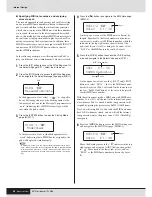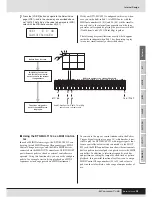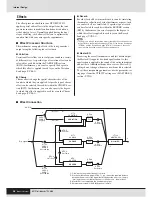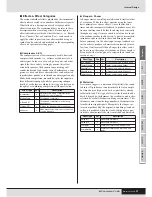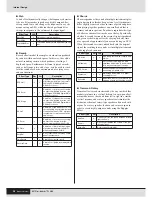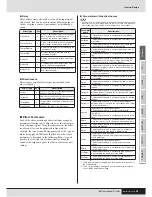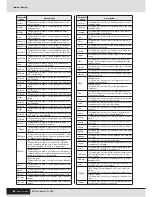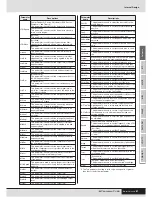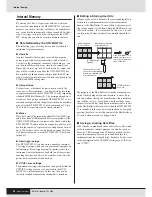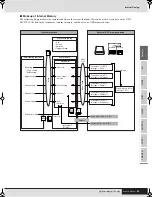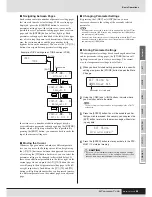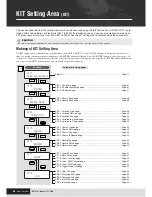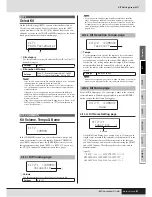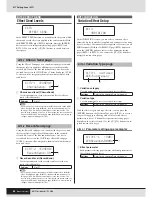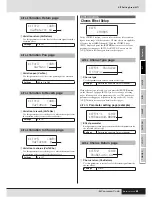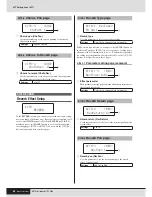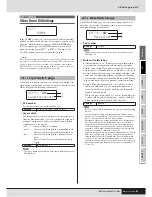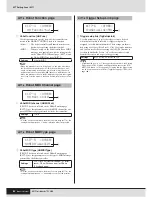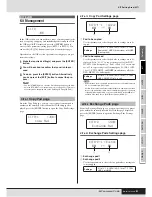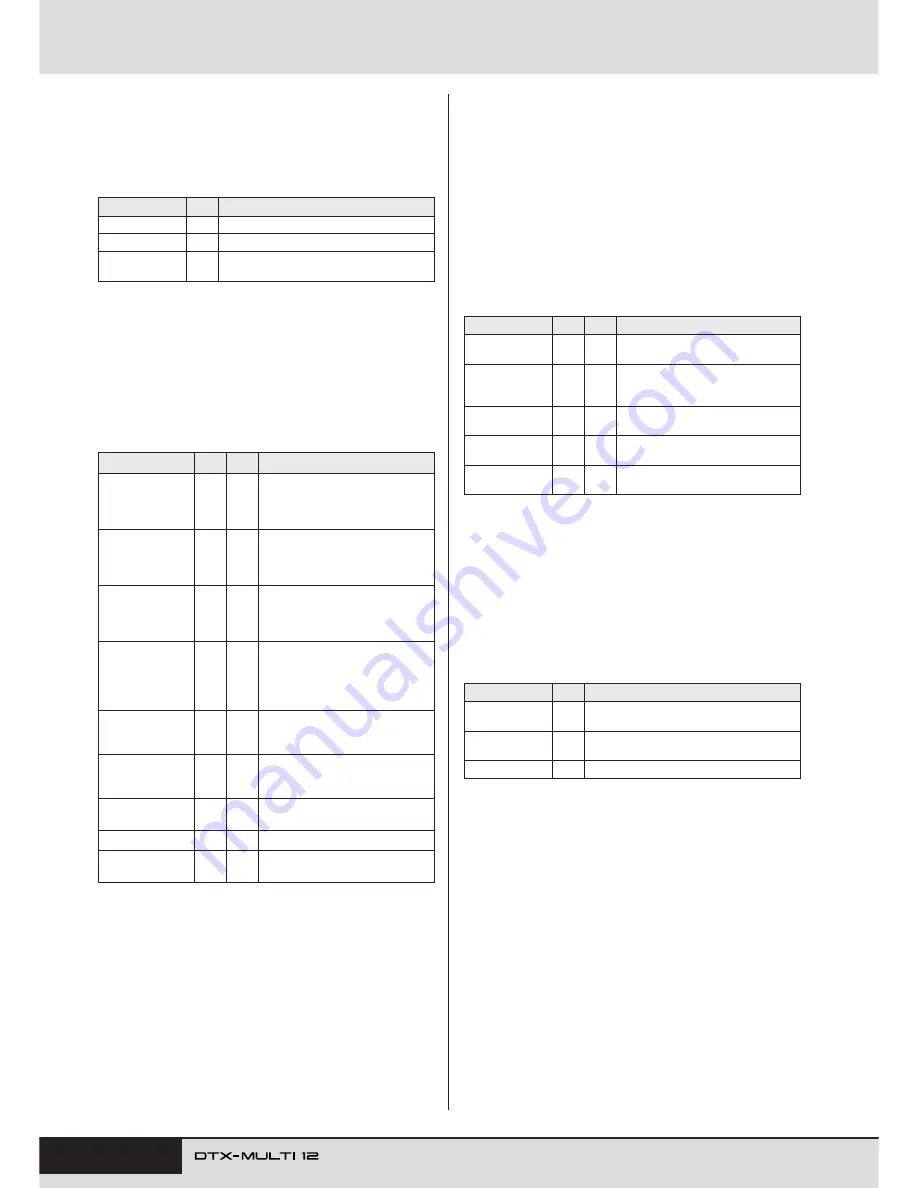
38
Owner’s Manual
Internal Design
●
Wah
A wah effect dynamically changes the frequency character-
istic of a filter in order to produce a highly unique filter-
sweep sound. Auto wah changes the frequency in a cyclic
manner using an LFO, while touch wah performs filter
sweeps in response to the volume of the input signal.
●
Reverb
Reverb effects model the complex reverberation produced
by sounds within enclosed spaces. In this way, they add a
natural-sounding sustain, which produces a feeling of
depth and space. Furthermore, different types of reverb –
such as hall, room, plate, and stage – can be used to simu-
late the sound of acoustic environments of varying sizes
and constructions.
●
Chorus
Chorus reproduces the sound of multiple instruments play-
ing in unison for a thicker, deeper tone. As all instruments
differ slightly from each other in terms of pitch and phase,
their playing together produces an overall sound that is
warmer and more spacious. In order to reproduce this type
of behavior, chorus effects make use of delay. Specifically,
a delayed, second version of the original signal is produced
and given a vibrato-type effect by varying its delay time
over a period of approximately one second using an LFO.
When this second version is mixed back into the original
signal, the resulting tone sounds as if multiple instruments
are being played in unison.
●
Tremolo & Rotary
Tremolo effects are characterized by the way in which they
modulate volume in a cyclical fashion. An auto-pan effect,
meanwhile, moves the sound from left to right in a similar
cyclical manner, and a rotary speaker effect simulates the
distinctive vibrato of rotary-type speakers often used with
organs. In a rotary speaker, the horn and rotor are spun in
order to create highly unique sounds using the Doppler
Effect.
Effect Type
VAR
Description
AutoWah
✓
Vintage automatic wah effect.
TouchWah
✓
Classic volume-responsive wah effect.
TouchWahDist
✓
Touch wah with distortion applied at the out-
put.
Effect Type
Rev
Var
Description
SPX Hall
✓
✓
Emulation of hall acoustics using an
algorithm derived from the classic
Yamaha SPX1000 Digital Multi-
Effects Processor.
SPX Room
✓
✓
Emulation of room acoustics using
an algorithm derived from the clas-
sic Yamaha SPX1000 Digital Multi-
Effects Processor.
SPX Stage
✓
✓
Emulation of stage acoustics using
an algorithm derived from the clas-
sic Yamaha SPX1000 Digital Multi-
Effects Processor.
R3 Hall
✓
–
Emulation of the acoustics of a con-
cert hall using an algorithm derived
from the Yamaha ProR3 – a digital
reverberator for professional-audio
applications.
R3 Room
✓
–
Emulation of room acoustics using
an algorithm derived from the
above-mentioned Yamaha ProR3.
R3 Plate
✓
–
Emulation of plate reverb using an
algorithm derived from the above-
mentioned Yamaha ProR3.
EarlyRef
–
✓
Early reflections without any subse-
quent reverberation.
GateReverb
–
✓
Simulation of gated reverb.
ReverseGate
–
✓
Simulation of gated reverb played in
reverse.
Effect Type
Var
Cho
Description
G Chorus
✓
✓
Rich, deep chorus with complex mod-
ulation.
2 Modulator
✓
✓
Chorus effect allowing pitch and
amplitude modulation to be adjusted
for a more natural, spacious tone.
SPX Chorus
✓
✓
Enhances modulation and spacious-
ness using a 3-phase LFO.
Symphonic
✓
✓
Multi-stage modulation for a wider-
sounding chorus.
Ensemble
–
✓
Modulation-free chorus achieved by
adding a slightly pitch-shifted sound.
Effect Type
Var
Description
AutoPan
✓
Cyclically moves the sound between left and
right channels.
Tremolo
✓
Cyclically modulates the volume of the pro-
cessed signal.
RotarySp
✓
Rotary speaker simulator.
Summary of Contents for DTX-MULTI
Page 1: ...Owner s Manual EN ...
Page 114: ...114 Owner s Manual MEMO ...

